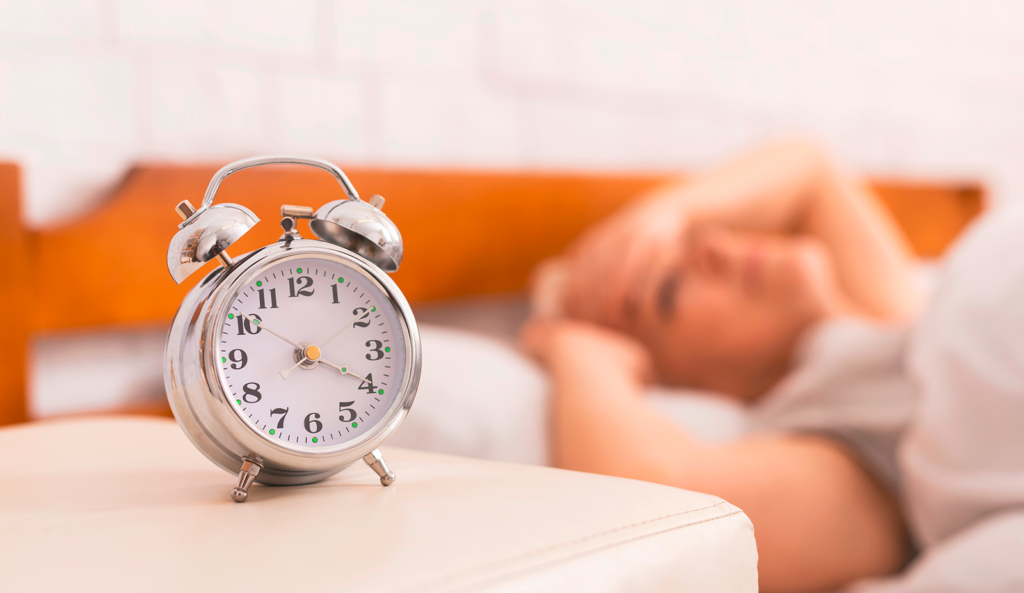Insomnia in the elderly: types of insomnia and treatments
Insomnia is a disturbance in the reconciliation and quality of sleep, being one of the most common disorders inthe general population. On many occasions it occurs even when there are adequate circumstances to sleep and causes a significant deterioration in the social, work and academic environment.
This type of sleep disorder is very common in elderly people who lead a sedentary life and can reflect negatively on their physical and mental health. In Spain, it is estimated that around 40% of the elderly population suffers from insomnia.
Types of insomnia
There are different types of insomnia that can be classified according to their duration, severity or the time of sleep that is most affected.
The most common symptoms during the day are irritability, lack of concentration, memory loss, excessive tiredness or anxiety.
Doctors estimate that when a person takes more than 30 minutes to fall asleep and/or sleeps less than 5 hours, he or she may be suffering from insomnia.
Generally speaking, we can establish two types of insomnia:
- Primary insomnia: is the one that generates difficulties in falling asleep or maintaining sleep. It usually lasts at least one month, causes significant discomfort or a deterioration in the activity of an individual.
- Secondary insomnia: appears when the person spends more than one month with sleep problems.
Depending on when it appears during the night:
- Initial insomnia: when there are mild or severe difficulties in falling asleep at bedtime.
- Intermediate insomnia: when the person wakes up several times or wakes up several times during the night.
- Final insomnia: when the person wakes up much earlier than the time he/she was supposed to.
According to its duration:
- Transient or acute insomnia: it lasts less than three months.
- Short-term or subacute insomnia: insomnia lasting more than one month, but less than six months.
- Chronic insomnia: occurs when problems in maintaining sleep extend beyond three months.
Treatment of insomnia in the elderly
Proper sleep hygiene is in most cases sufficient to avoid insomnia, although lifestyle also plays a role, such as going to bed and getting up at the same time, avoiding or limiting naps, exercising regularly, avoiding caffeine and alcohol consumption as much as possible, etc.
However, therapies can be used to treat the cognitive-behavioral to re-educate the sleep habits of the person in question or, in certain cases, pharmacological treatment may become necessary, in which a health professional should determine the most appropriate treatment.
Sleep hygiene measures to fight insomnia
In order to curb insomnia, there are several measures that experts recommend adopting, such as:
- Avoid naps during the day, especially after a night of poor sleep.
- Avoid excessive fluid intake or heavy meals at night, as well as caffeine, nicotine and alcohol before bedtime.
- Maintain a regular sleep schedule by getting up and going to bed at the same time.
- Schedule a gradual reduction of activity before going to sleep
- Establish a bedtime routine
- Maintain a quiet, dark, safe and comfortable sleep environment.
- Avoiding the use of mobile devices before going to sleep
Cognitive-behavioral therapies
We can perform different techniques that help to improve sleep, such as:
- Stimulus control: it is about associating the bed and the bedroom with sleep. This therapy is based on following a series of instructions such as avoiding stimulating activities before going to bed, only going to bed to sleep and, if unable to do so, going to another room to try to relax in order to finally fall asleep.
- Sleep restriction: a technique that modifies the total sleep time based on sleep efficiency. It should be decreased or increased depending on the improvement or worsening of sleep quality and duration. This technique is suitable for older people who wake up several times during the night.
- Relaxation techniques: They aim to reduce psycho/physiological arousal to promote sleep. Their objective is for the patient to achieve deep levels of muscular relaxation in order to fall asleep more quickly.
- Phototherapy: If you go to sleep very early and then wake up very early, you can use light to slow down your internal clock. You can go outdoors at times of the year when it gets dark late, or use a light therapy lamp. Talk to your doctor about his or her recommendations.
Pharmacological treatments
Insomnia medications (hypnotics) should be recommended when a rapid response is needed or when insomnia is severe and significantly impairs the sufferer. In fact, hypnotics may also be recommended for people who continue to suffer from insomnia despite lifestyle changes and insomnia therapy.
Depending on whether the insomnia is daytime or nighttime, the use of some medications or others should be considered, as they may worsen the symptoms depending on the time of day.
The most common medications to alleviate sleep disorders such as insomnia are:
- Antihistamines: H1-antihistamines have a hypnotic or tolerance effect, which means getting used to the effect relatively quickly. They are therefore recommended for the short-term treatment of insomnia, as they are also sold over the counter. In the case of the elderly, they may have adverse effects if used regularly.
- Benzodiazepines and analogues: These are the most commonly used drugs for the treatment of insomnia, since they act quickly and effectively. Their long-term use is not recommended as they could develop tolerance and dependence in their consumers.
- Melatonin: Melatonin is recommended especially for people over 55 years of age, as it helps to improve sleep quality and quality of life. Unlike benzodiazepines, it does not alter sleep architecture. Moreover, it does not affect cognitive abilities or physical agility, which is a great advantage for its use by the elderly.
In conclusion, insomnia in the elderly is a common problem that can have a significant impact on the physical and mental health of older adults. The causes of insomnia in this population can be diverse, such as changes in sleep patterns, chronic diseases, medications, stress and anxiety.
It is important for older adults with insomnia to seek medical treatment if the problem persists and affects their quality of life. Treatments may include lifestyle changes, such as regular physical activity and relaxation before bedtime, as well as pharmacological and non-pharmacological therapies.
In addition, caregivers and family members of older adults can help prevent insomnia by encouraging healthy sleep habits, such as maintaining a regular sleep routine and a comfortable, quiet sleep environment. Ultimately, addressing insomnia can improve the overall health and well-being of older adults.

